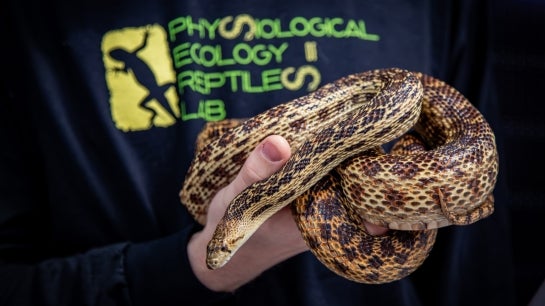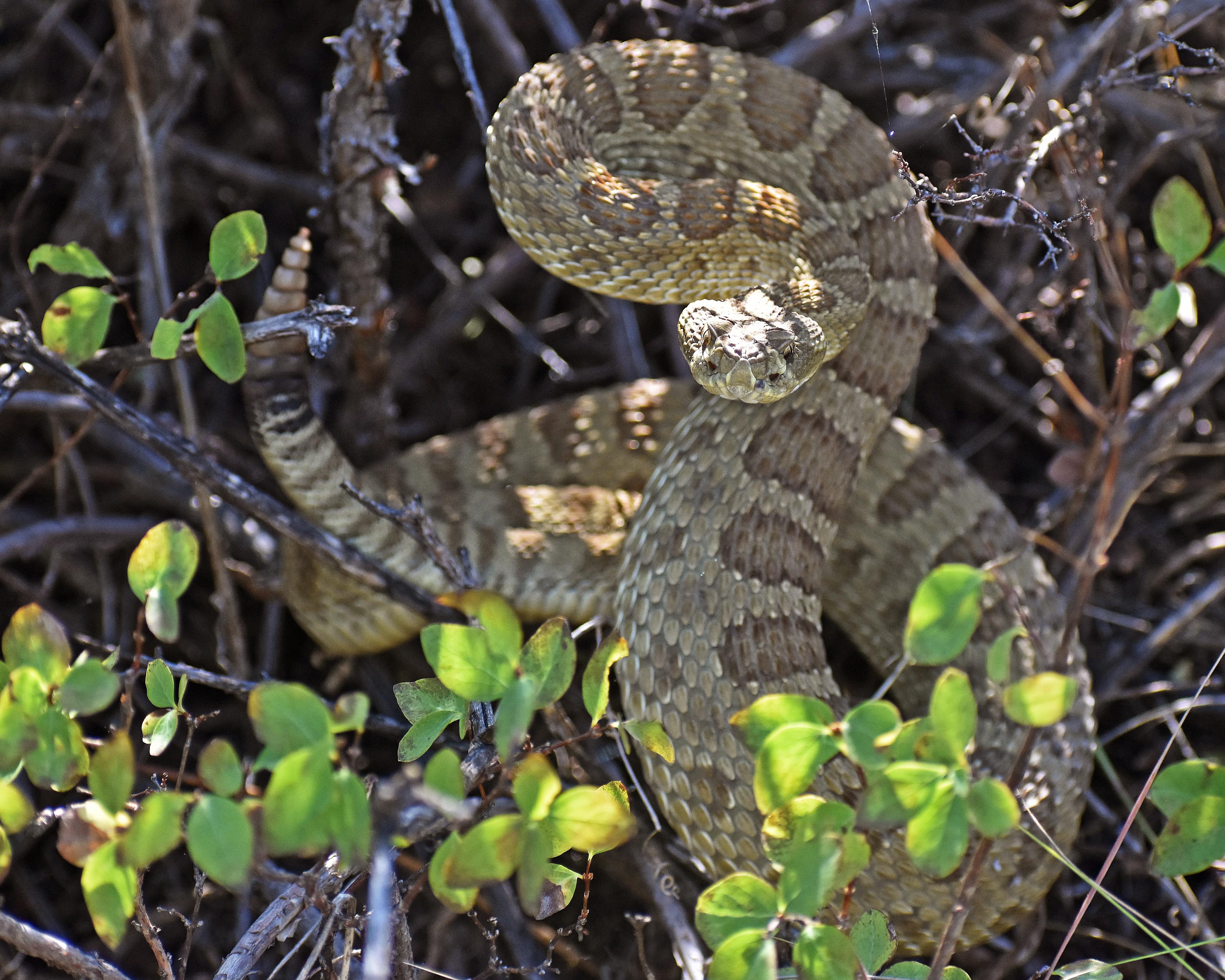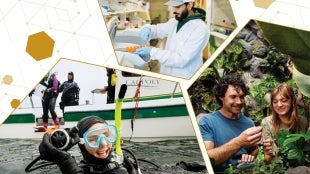BCSM Crowdfunds for a New Rattlesnake Camera

Header image: a photo taken at Cal Poly by Alexis Kovacevic
Project Rattlecam is crowdfunding for another live-streaming camera on a rattlesnake den in Pennsylvania. With a campaign goal of $15,000, this third RattleCam will feature Timber Rattlesnakes and will add to the two existing cameras in Colorado and California, allowing students and the public alike to study these animals in their natural habitats.
Biological Sciences Professor Emily Taylor runs the project and is excited about the possibilities this new camera and den could provide.
“It's a gestation site where female rattlesnakes prepare to give birth,” she explained. “Predators and other animals visit this den, including bears, bobcats, and hawks who steal baby rattlesnakes, so there'll be a lot of action.”
The RattleCams can pan, tilt, and zoom, and are staffed by students who answer questions from the public. Last year the site received 2.5 million views worldwide.
Emma Reardon is a third-year environmental management and protection major with a minor in biology and is one of a dozen students who run the RattleCam. In addition to interacting with the public online, Reardon observes and records snake behavior. She credited this hands-on work with giving her experience towards her goal of becoming a project manager for environmental restoration projects.
“I like the community science side of things and figuring out how to say things in a way that people will understand,” Reardon explained.
The camera in Colorado received significant press coverage last year and Taylor credits that to the subject matter.
“People either love snakes or they're horrified,” she explained. “A lot of people come to the live stream because the idea of being scared is appealing. But as they watch, they realize that it isn't a bunch of scary snakes. They have been duped their whole lives by how rattlesnakes are portrayed on TV.”
Taylor is a veteran of successful crowdfunding campaigns. Each camera was almost exclusively donor funded, with funds covering costs including streaming fees, winter tolerant batteries, solar panels, and travel for students and staff. Taylor promotes these campaigns on social media, sends out appeals via email, and mentions them in the live chat as well as at outreach events she attends. She said donors are motivated to support student research and to provide students with opportunities to attend conferences and co-author papers and noted that this campaign comes at a critical time.

“Getting funding for doing behavioral work on snakes is especially difficult now that a lot of federal funding is in limbo,” she said. “Donor funding has never been more important than it is right now for scientists.”
Reardon encouraged people to keep an open mind and tune in to see these snakes for themselves.
“People might be surprised by the power of watching an animal when it's undisturbed,” said Reardon. “I've seen more people than I expected switch sides, from really disliking or being fearful of snakes, to saying, ‘Oh, wow, these animals are really beautiful.’ Most of the time they're just very calm, beautiful, peaceful creatures. The RattleCam can change people's outlooks, and that is really cool.”
Check out the current Project RattleCam livestreams here and help the team reach their goal to fund a new camera by donating to this current crowdfund campaign here!




